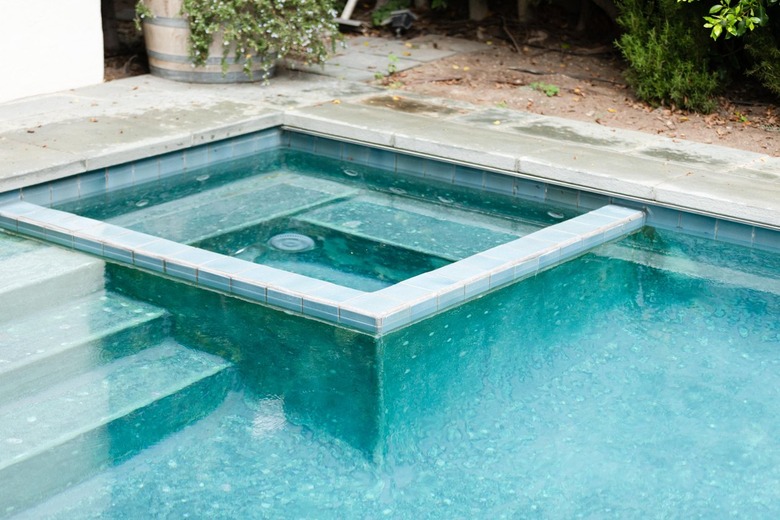Why Are The Walls And Floor Of My Pool Very Slimy And Slippery?
We may receive a commission on purchases made from links.
If your pool is starting to feel more like a slip and slide than a place to splash or swim laps, it's time to do a little investigating. Anything from improper water chemistry to algae or bacteria can be to blame for slippery pool walls and floors. Figuring out the cause and handling regular pool maintenance can help correct the situation to make sure your pool isn't dangerously slippery.
Algae Growing in the Pool
Algae Growing in the Pool
The slimy feel on your pool walls is an early indication of algae growth. If you don't stop it early, the algae with multiply quickly and become a much bigger problem. To stop algae growth in its tracks, clean the pool filter first before adding any chemicals to the pool. A clean filter helps the circulation of chemicals and prevents bacterial growth.
Cartridge, sand, or diatomaceous earth filters all have their own backwashing methods for cleaning. Backwashing flushes the filter free of the dirt and debris it has collected over the course of normal operation.
Water Is Too Warm
Water Is Too Warm
The filter should be running after you backwash it. Use a testing kit or testing strips, both of which are available at your local pool supply retailer, and determine what aspects of the water chemistry need to be adjusted, from the pH level to the chemical content.
The water will feel slimy in many cases when the temperature exceeds the normal range, such as during a heat wave. The warmer the temperature, the faster chlorine dissolves in the water. Add enough chlorine to bring it into the normal range as indicated by the testing kit.
Not Using Algaecide Correctly
Not Using Algaecide Correctly
Pool supply retailers suggest using pool algaecide as part of your regular pool maintenance schedule. Many people have the misconception that algaecide is effective once algae have bloomed in your pool. This isn't the case — algaecide is most effective as a part of regular maintenance to prevent the growth of algae.
If slimy pool walls are a regular occurrence, start using algaecide routinely. Add it weekly or after every shock treatment. Algaecide will only help, not hurt, your pool. Just don't add too much because it can cause suds in your pool.
Out-of-Control Bacterial Growth
Out-of-Control Bacterial Growth
Algae are microorganisms that thrive in bacteria-ridden water. Slime is a good indication that bacteria have taken over and need to be controlled. You can do this by cleaning and shocking the pool.
To clean the pool, brush the pool floors and walls with a pool brush. Then add a shock treatment to the water, taking into account your pool's water capacity. Shock treatments are sold in both granular and liquid forms and can quickly bring sanitizing levels up to kill bacterial growth.
